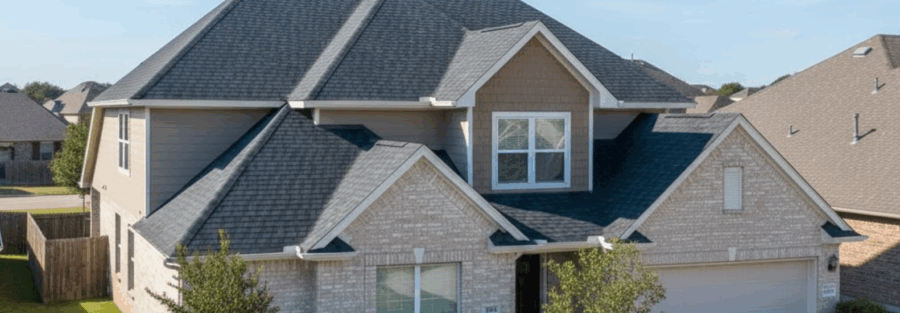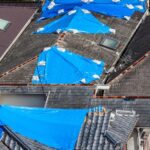When the time comes to replace a roof, the first question most homeowners ask is, “What will it cost?” Roof replacement costs vary from home to home, which is why clear, local guidance is so important. In DFW, wind, hail, heat, and sudden storms all influence timelines, material choices, and ultimately your investment. This guide breaks down the factors that drive roof replacement cost, how different materials and roof complexity affect pricing, and how to get accurate, apples-to-apples estimates you can trust.
We’re Alpine Roofing, and we’ve helped thousands of homeowners and property managers navigate roof replacement costs with confidence. We’ll also cover how insurance claims, warranties, and contractor selection affect the total picture, so you can protect your home the way it deserves. If you want to move from guesswork to a real plan, you’re in the right place.
Average Roof Replacement Cost at a Glance
National Averages and Typical Range
Roof replacement cost varies widely because every roof is essentially a mini construction project. Labor, materials, tear-off, disposal, and potential structural or decking repairs all factor in. In climates like North Texas, where heat swings to hail storms, upgraded components often come into play, affecting the total cost.
Broad averages are useful for context, but your roof’s specifics—age, damage, material choice, pitch, and necessary accessories—matter more. A professional inspection turns guesswork into clarity.
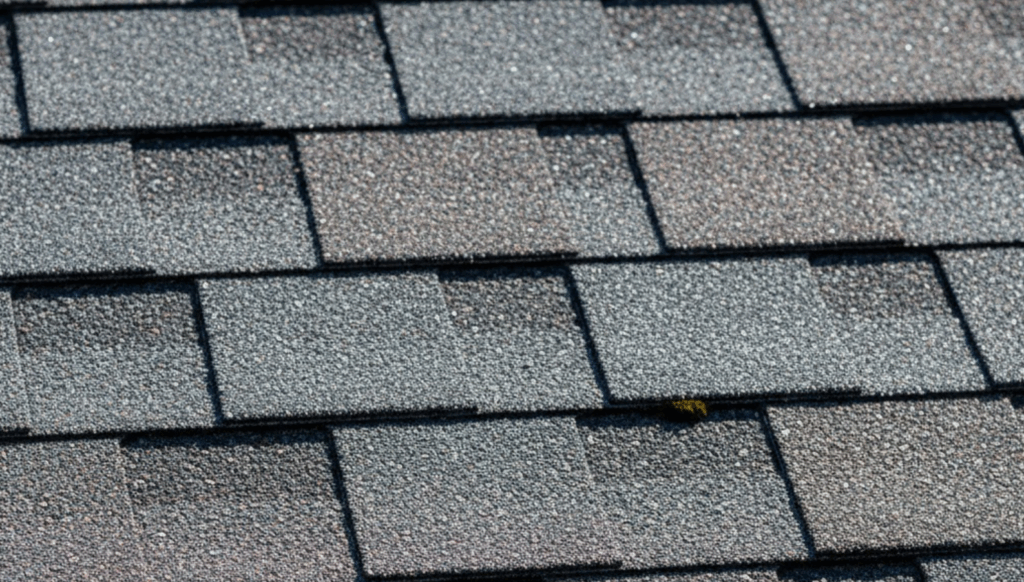
Cost per Square Foot and per Roofing Square
Roofing professionals measure in “roofing squares,” where one square equals 100 square feet. Cost per square or per square foot varies depending on roof slope, safety requirements, and material quality. A simple, single-story asphalt roof installs very differently than a steep, multi-plane roof with multiple valleys and penetrations.
Comparing numbers online? Make sure you’re looking at full systems, not bare-minimum material swaps. Ventilation, underlayment, and flashing all impact both performance and cost. A short on-roof visit is the fastest way to validate your assumptions. Book a no-pressure inspection today through our Roofing Services page.
Key Factors That Drive Roof Replacement Cost
Size, Pitch, and Complexity
Roof size determines material and labor needs. Steeper slopes add time and safety measures, while multiple planes, valleys, dormers, chimneys, or skylights increase precision work. Access issues, such as tight lot lines or limited driveways, can also extend setup, tear-off, and cleanup.
Material Selection and Quality
Materials play a major role. Architectural asphalt shingles, metal panels, tile, slate, and flat membranes each bring unique installation methods, lifespans, wind/hail ratings, and warranty options. Premium underlayments, ridge and hip accessories, and enhanced ventilation modestly increase cost but provide long-term durability—especially important in DFW’s storm-prone areas.
Tear-Off, Disposal, and Deck Repairs
Removing old layers, hauling debris, and inspecting or replacing damaged decking is essential. Hidden water damage or soft spots often appear during tear-off, and code-required upgrades can impact your roof replacement cost. Your proposal should outline how these findings are handled so costs don’t become a moving target.
Roof Replacement Cost by Material

Asphalt Shingles
Asphalt shingles remain the most common choice for DFW homes because they balance affordability, durability, and style. Architectural shingles outperform older 3-tab styles with better wind resistance and enhanced curb appeal, while impact-resistant shingles help minimize future hail damage and repairs. Total roof replacement cost is influenced by shingle grade, brand, color, and the accessory package included, such as ridge caps, starter strips, and flashing. Proper underlayment and ventilation also play a role in both performance and long-term value.
Metal Roofing
Standing seam and metal shingles provide exceptional longevity, energy reflectivity, and strong wind and hail resistance. While upfront costs are higher than asphalt, they are offset by lower maintenance needs and a long service life. Factors such as panel gauge, paint system, and clip or fastener design directly affect performance and roof replacement cost. Precise installation is critical, and professional crews ensure proper flashing, sealing, and alignment to prevent leaks and extend roof life.
Tile and Slate
Concrete, clay, and natural slate tiles offer a premium, long-lasting roofing solution with distinctive aesthetic appeal. These heavier systems require a structural evaluation to confirm your roof can support the added weight. Installation demands specialized skills, and all accessories—underlayment, flashings, ridge components—must be compatible with tile or slate systems. Roof replacement cost reflects the craftsmanship, structural considerations, and labor intensity involved in these high-end installations.
Flat Roof Membranes
For low-slope or flat roof sections, TPO, PVC, and modified bitumen membranes are commonly used. Membrane thickness, color, insulation type, and installation method—mechanically attached, fully adhered, or torch-applied—impact both performance and cost. Proper drainage is essential, as ponding water can shorten membrane lifespan and void warranties. Flat roofs also require careful attention to seams, penetrations, and edge flashing to ensure durability. Not sure which system fits your home? Schedule a free consultation today.
Other Costs and Extras to Budget For
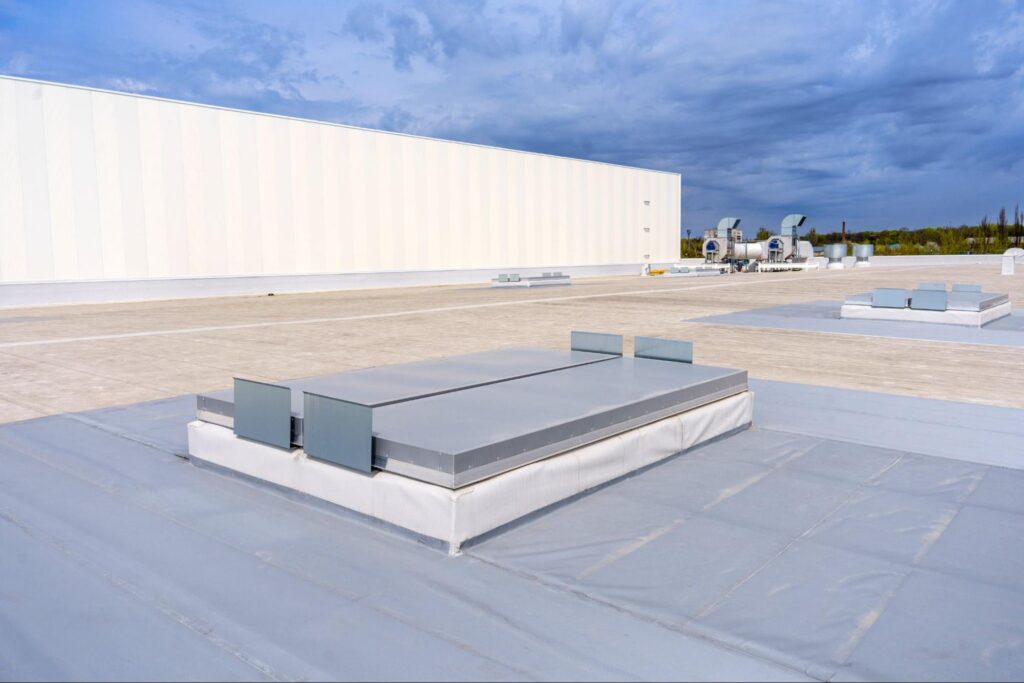
Ventilation, underlayment, and ice/water barriers protect your attic from heat and moisture buildup. Flashing around chimneys, walls, and skylights prevents leaks. Reflashing, diverters, or detach-and-reset work for roof-mounted equipment adds labor but protects your home. These upgrades slightly increase roof replacement cost but are essential for long-term performance. We’ll identify system upgrades that make sense for DFW homes during your inspection.
Insurance, Warranties, and Financing
Storm damage is part of life in DFW. Hail or wind may be covered under your policy. Alpine Roofing supports documentation, photos, and estimates to help align scope with insurer-approved costs. Manufacturer warranties protect materials; workmanship warranties cover installation. Using compatible components and proper ventilation keeps warranties valid. Suspect storm damage? Start here.
How to Get Accurate Estimates and Choose a Contractor
When reviewing roof replacement proposals, make sure the scope of work is clearly detailed. A thorough proposal should outline tear-off and disposal, deck inspection and any necessary replacement, underlayment type and barrier locations, ventilation strategy, and flashing around all penetrations. It should also specify material brand, grade, and color, starter, hip/ridge, and fasteners, as well as cleanup procedures, site protection, and warranty terms.
Asking the right questions helps protect your investment. Confirm the contractor is licensed and insured in Texas, find out who supervises the crew and whether a project manager will be on-site, and check if they install full manufacturer-backed systems. Understand how unforeseen deck repairs are handled and how the team will protect landscaping and neighboring property during the project.
Watch for red flags that can indicate trouble. Vague, one-line proposals, reluctance to provide proof of insurance, pressure tactics, or cash-only requests are all warning signs. Avoid contractors who promise to “cover your deductible” or use aggressive sales techniques after storms. Choosing a team that communicates clearly, documents the full system, and stands behind their work helps ensure a smooth project and protects your roof replacement investment. Watch out for vague proposals, pressure tactics, or cash-only demands.
Comparing bids? Line up materials, ventilation, flashing, and warranty terms. Lowest price isn’t always best if it risks leaks, voided warranties, or premature aging. Choose a team that documents the full system and stands behind their work. Ready for a clear, detailed proposal? Start with a roof assessment today.
Conclusion
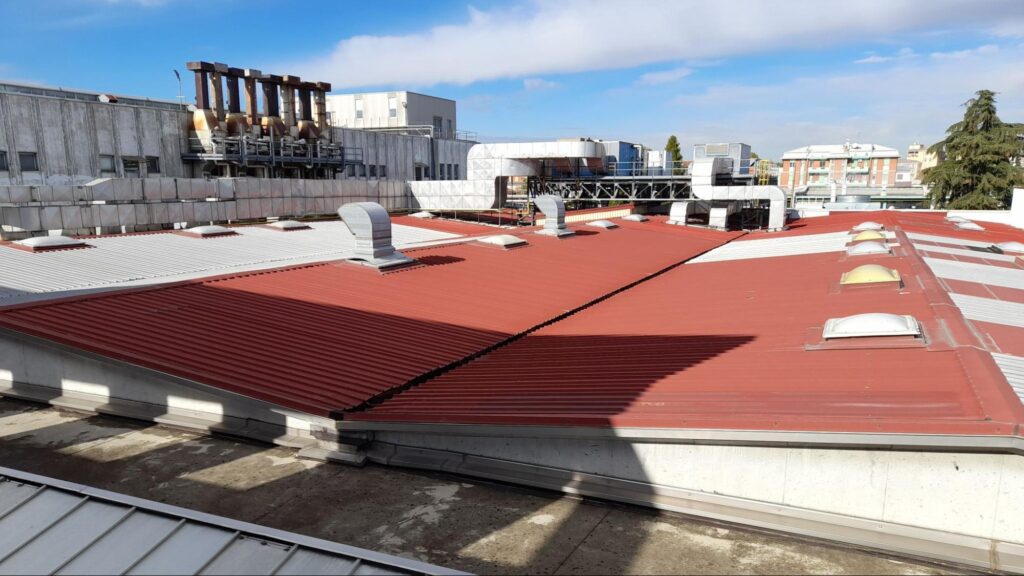
Roof replacement cost depends on size, complexity, material system, and quality of components. In North Texas, where storms test every detail, a complete scope and experienced installer make all the difference.
Alpine Roofing is your trusted roofing company in DFW Texas. We are located at 7247 Kentish Dr, Fort Worth, TX 76137. Call +1 682-257-4631 or email info@alpineroofingandsolar.com. If a recent storm has impacted your home, we’ll meet you on the roof, document everything, and provide a transparent plan. Get started today.
Roof Replacement Cost: Frequently Asked Questions
What factors drive roof replacement cost in DFW?
Roof size, pitch, complexity, access, labor, tear-off, disposal, and deck repairs. Ventilation, underlayment, flashing, and warranty choices also affect long-term cost. Professional inspections clarify variables.
How do materials affect cost?
Architectural asphalt is most affordable; metal lasts longer with higher upfront costs; tile and slate need structural checks; TPO/PVC membranes suit low slopes. Grade, impact ratings, and installation method influence cost and lifespan.
What’s included in per-square pricing?
Complete systems include tear-off, disposal, underlayment, ventilation, shingles/panels/membrane, flashing, ridge/hip accessories, fasteners, and cleanup. Steep or cut-up roofs add labor.
How do insurance and warranties impact cost?
Claims can offset replacement costs. Strong documentation ensures alignment with insurer-approved scope. Manufacturer and workmanship warranties protect materials and installation.
How long does replacement take?
Single-family asphalt typically 1–3 days. Metal, tile, or slate, or large/complex roofs, take longer. Weather and deck repairs also influence duration.
Are there tax credits or deductions?
Standard roof replacements aren’t tax-deductible. Energy credits apply only for solar installations. Some Texas insurers offer premium credits for impact-resistant shingles.

